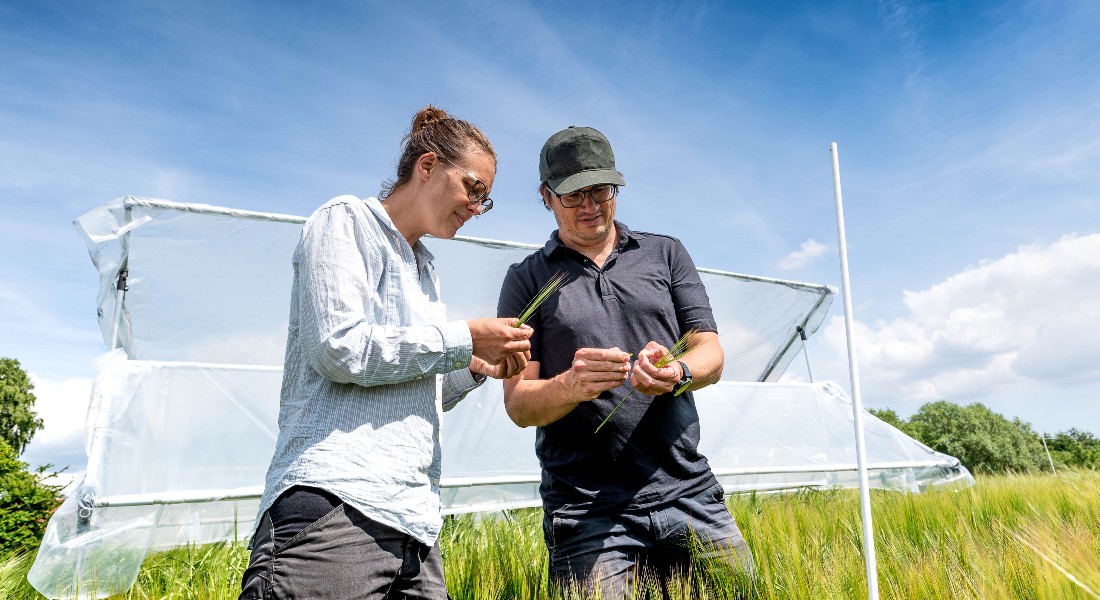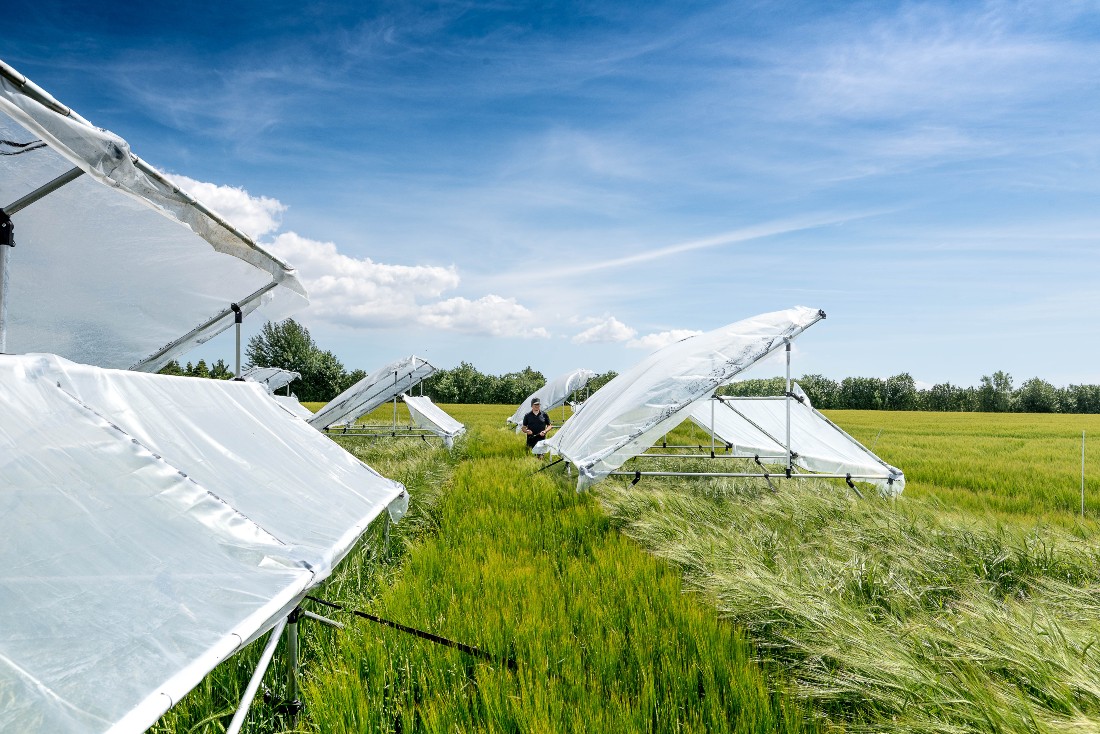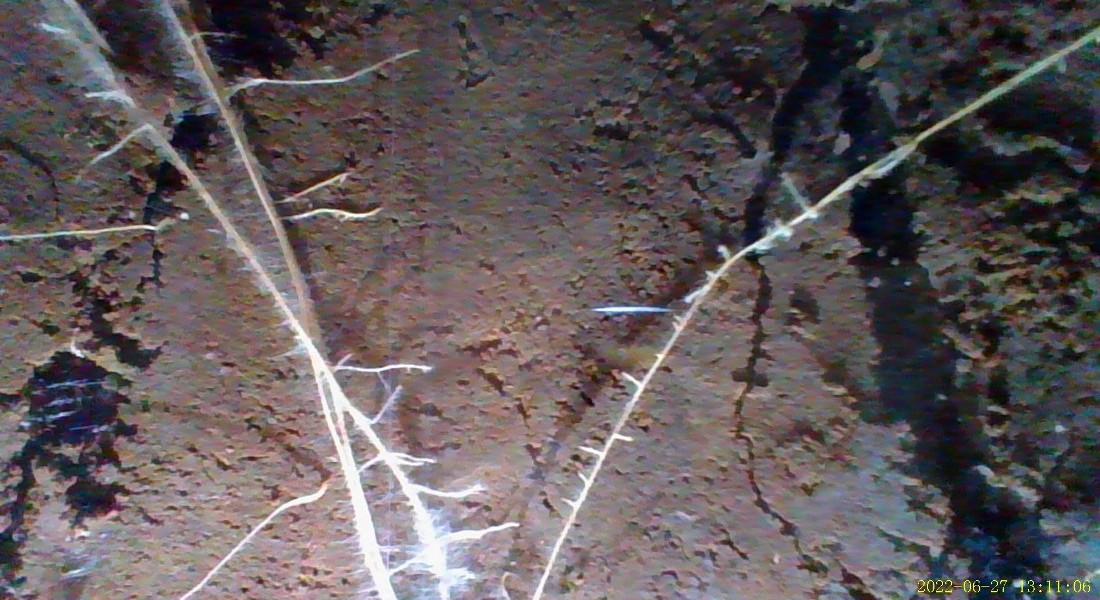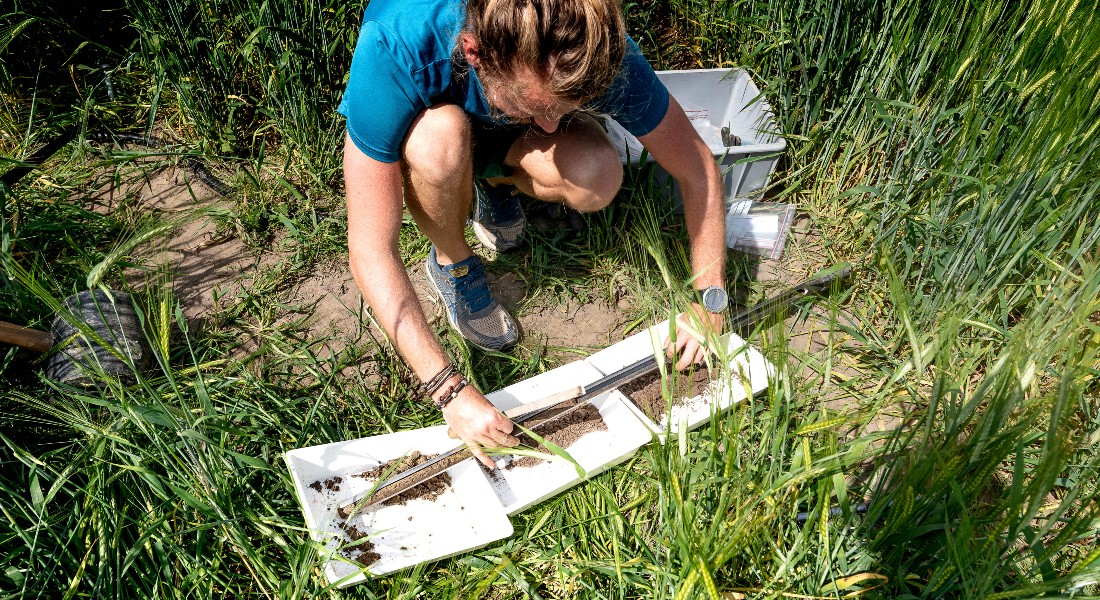Two grains, mutual gain: surviving drought through varietal collaboration
Some draw water from the soil’s depths, while others absorb nutrients nearer to the surface with shallow, wide root systems. Fields of grains with mixed properties could be the future for farmers hoping to protect their crops from extended droughts, according to researchers from the University of Copenhagen.

According to a new report published by the EU's Joint Research Centre (JRC) on 22 August, nearly half of Europe is threatened by a drought that has greatly reduced summer harvests. Scenarios such as the this are likely to become more and more common in the future.
To address the issue, researchers at the University of Copenhagen’s Department of Geosciences and Natural Resource Management and Department of Plant and Environmental Sciences are studying how to promote drought resistant agriculture.
Modern grains are not bred to withstand the more volatile and extreme weather patterns that climate change seems to be bringing along with it.
"Our hypothesis is that if we use different grains, each with their own properties, they will be able to complement one another. You could say that we are looking for a synergetic effect to make entire fields more robust. We hope that this will result in more stable yields during periods of drought and better equip crops for the reality of climate change," explains Associate Professor Carsten W. Müller of the Department of Geosciences and Natural Resource Management.
The general idea of the experiment is that a farmer may be able to ensure a stable yield, regardless of whether there is a drought or not, by mixing varieties with different characteristics which can withstand both drought and normal weather patterns.

Sharing resources
Beginning in spring, the researchers sowed two distinct varieties of barley in fields at the University of Copenhagen's experimental farm in Taastrup. Some of the barley has fewer, yet longer roots, which penetrate deeply into soil. The other has more expansive, yet much shallower root systems. In some of the experimental fields, the varieties are mixed, while in other fields, the barley are physically separated into longer and shallower root varieties.
The researchers simulate drought by using small canopies of plastic sheeting to cover and prevent rain from reaching the crops. The idea is to see which fields will perform best and achieve the best yield when the experiment ends.
"Varieties with deep roots act as a hydraulic pump that can pump water up from deeper in the soil to varieties with shallower root systems. On the other hand, the shallower root varieties are better at accessing phosphorus and absorb more carbon. As such, the varieties share soil resources and benefit from each other's strengths. That's our theory at least," says Carsten W. Müller.

German experiment demonstrated positive effects
Grains with shallow, wide root systems also have the ability to attract more microorganisms. These help foster plant growth and thereby work for the mutual benefit of all grain varieties. Up to 100 million live bacteria per gram of soil serve to break down organic matter and make it easier for plants to absorb nutrients.
The researchers are able to follow what is happening below the surface using underground cameras and sensors. Among other things, the photos document root development and their response to drought.
The experiment is inspired by a famed German experiment [link]. Years ago, it demonstrated how species diversity in grasslands had a positive effect on soil fertility and carbon sequestration.
"We are attempting to transfer the knowledge gained from the German experiment to cereal crops. We are looking for answers as to whether one variety will die off while the other thrives, or whether they will be actually help each other," concludes Carsten W. Müller.

Contact
Carsten W. Müller
Associate Professor
Department of Geosciences and Natural Resource Management
University of Copenhagen
+45 35 33 41 25
cm@ign.ku.dk
Dorette Sophie Müller-Stöver
Associate Professor
Department of Plant and Enviromental Sciences
University of Copenhagen
+45 35 33 12 36
dsst@plen.ku.dk
Michael Skov Jensen
Journalist and team coordinator
The Faculty of Science
University of Copenhagen
+45 93 56 58 97
msj@science.ku.dk
